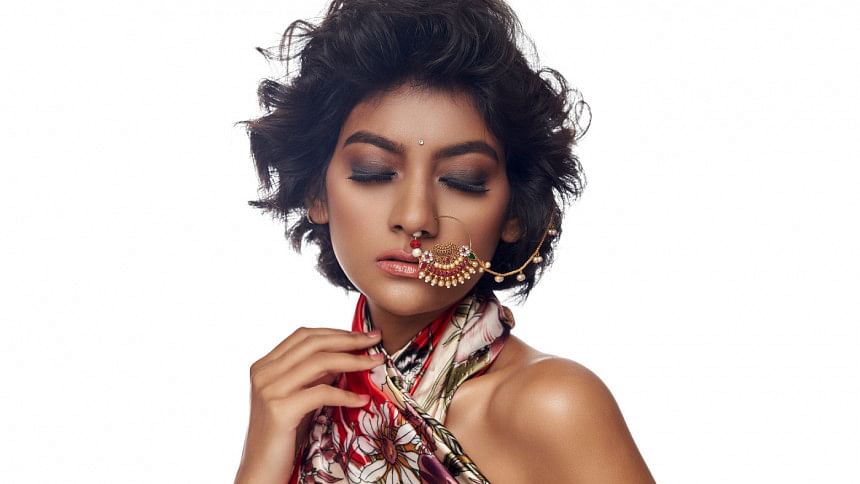Eid fashion reimagined with nath and tikli styling tips

Originating from South Asian cultures, the nath and the tikli hold deep cultural significance. While traditionally worn as bridal jewellery, many are now adopting these intricate head and nose ornaments in less formal settings. Explore the art of styling these timeless pieces and learn how to seamlessly integrate them into your Eid ensemble this year.

Let your nath do the talking
Traditionally associated with weddings and other ceremonial occasions, the nath has evolved beyond its bridal roots to become a stylish accessory suitable for various events, including Eid celebrations. This ornamental nose ring, with its delicate design and intricate craftsmanship, adds cultural flavour to any outfit.

Styling the nath for occasions beyond weddings demands some creativity and a whole lot of confidence. Despite the bling factor associated, the nath is versatile in that it complements both traditional and contemporary attires. For Eid, consider opting for a subtle yet elegant nath design that enhances your overall look without overpowering it. Choose a size and style that aligns with your taste and the aesthetic of your outfit.

One popular way to style the nath is by pairing it with festive ethnic wear such as a saree, shalwar kameez, or a gorgeous Anarkali suit. Alternatively, you can incorporate it into fusion ensembles by pairing it with a modern dress or a chic blouse and skirt combination.

Whether you prefer a classic gold piece with intricate detailing or a more contemporary design featuring pearls or gemstones, the nath serves as a statement piece that adds an instant glam factor to your look.




Adorned with culture and grace: Tikli
For those who find the nath a little too much can also opt for a tikli or a jhapta to make their Eid ensemble unique. Yet another beloved adornment from the South Asian culture, the tikli too has transcended its traditional bridal associations to become an accessory that is suitable for various other occasions, including religious festivities. This ornamental piece, typically worn on the forehead, exudes elegance and grace, making it a perfect addition to any ensemble that demands a touch of culture and celebratory vibe.

Styling the tikli for non-bridal events offers a chance to showcase its beauty and cultural significance in a fresh and modern light. Unlike its heavy bridal counterparts, tikli designs for occasions like Eid tend to be lighter and more delicate, allowing for effortless styling without overwhelming the overall look.

Consider opting for a design that complements your outfit. Whether you prefer a simple yet elegant design or one embellished with pearls, beads, or gemstones, the tikli can be that striking focal point in your look that enhances your overall appearance. Be sure to balance the bling factor in your look — the simpler the outfit, the better the tikli looks.

The tikli is as adaptable a piece as the nath and looks great on both traditional and fusion to even contemporary fashion. If you want to test its limits to see how far its versatility stretches, why not try pairing one with fusion outfits, for a modern twist?

You could also go for its close cousin, the jhapta, which is a triangular cluster of gems or precious metals, worn on one side of the head. Originating from the opulent courts of the Mughal era, the jhapta emerged as a symbol of regal splendour and refined taste. Today, it graces occasions like Eid, infusing festivities with historical significance, symbolising cultural continuity and timeless elegance. Opt for a small-sized jhapta, in oxidised gold or silver and wear it with a plain, classy saree or keep it simple and wear it with a light-coloured Anarkali. The choice is yours and the sky's the limit!




 For all latest news, follow The Daily Star's Google News channel.
For all latest news, follow The Daily Star's Google News channel. 



Comments